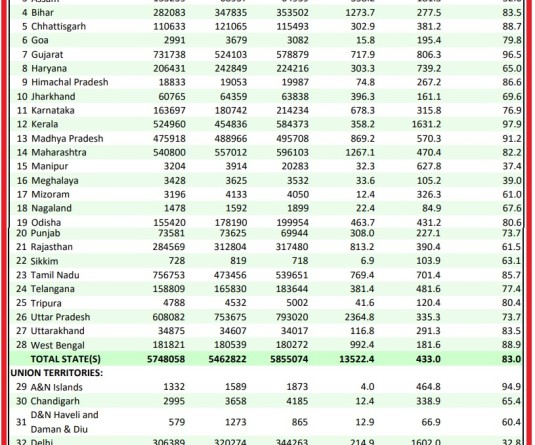Some of the attendees of the 11th edition of the Highlander Lecture Series held at the De Oriental Grand, Kohima on December 19. (Morung Photo)
Morung Express News
Kohima | December 20
“In a context in which climate emergency is advancing at a frightening speed, tropical rain forests occupy a phenomenal place in scientific and political debates,” remarked Antonio Guerreiro, anthropologist and professor from the State University of Campinas, Brazil, on December 19.
Delivering the 11th edition of the Highlander Lecture Series at the De Oriental Grand, Kohima, he stated that these areas are fundamental to climate regulation at the local, regional and global scale and are also responsible for the lives of millions of people who depend on rain forest for food, shelter, water and medicine.
In this context, he also highlighted that the Amazon occupies a central place as the largest tropical rain forest in the world with an area of around 6.7 million sq km and stretching across 8 South American countries including Brazil, Bolivia, Colombia, Ecuador, Guyana, Peru, Suriname, Venezuela and French Guiana, an overseas territory of France.
Highlighting Brazil's vast social and biological diversity, Prof Guerreiro, referencing official data from 2022, informed that the country is inhabited by 1.7 million indigenous people representing 300 ethnic groups, and speaking approximately 270 distinct languages.
Speaking on the topic, “Risks to Indigenous Heritage Related to Watercourses in the Amazon: Kalapalo Management of Rivers, Lakes and Riverine Life in a Changing Environment,” he dwelt on Brazil’s Kalapalo indigenous people, and their connection with their rivers, lakes and streams.
The professor also gave an overview of the threats on rivers in Brazil in the lecture series launched in 2013.
Nagaland & Amazon ‘greatest connection’
Meanwhile, responding to a query while drawing parallel comparisons between the Nagas and the Kalapalo and how they could learn from each other, Prof Guerreiro observed that, “the relationship between land, houses, and widespread cultivation in Nagaland was truly remarkable.
“The very existence of the type of social organisation in a state such as Nagaland with this huge diversity, several groups, several languages is just absolutely amazing,” he said.
Many, if not all Amazonian people, he maintained would love to learn more about Naga’s political experiences while adding that discourses on autonomy, independence, self-determination, and self-organisation echoes widely with current indigenous movements discussion in South America.
“I think they would have a lot to learn from Nagaland,” he emphasised.
Highlighting the commonalities between the two communities, Prof Guerreiro stressed that since these are two regions with agricultural potential, there could be a valuable exchange of knowledge regarding agricultural practices and information about new species for the food chain.
Agriculture could be one of the greatest points of connection between Nagaland and the Amazon, he asserted, while citing that “both of these regions have a lot to talk about tradition and cultural practices.
They not only preserve biodiversity but also actively create biodiversity, he added.
Highland Institute’s International Conference
Mention may be made here that the Highlander Lecture is the culminating event of the six-day international Conference on “Collaborative Methodologies in Global Environmental Humanities” hosted by The Highland Institute as part of the EKOLOGOS Project from December 14-19.
EKOLOGOS is a project aimed at strengthening higher education for a sustainable future, in the critical zones of rapid climatic change in the Arctic, Amazon, South Asia, and the Himalayas.
Combining a winter school for junior scholars from Nagaland and elsewhere, and a summit for senior scholars and community leaders, the Conference engaged new methodologies ranging from fieldwork to film and other forms of artistic storytelling with speakers from various disciplines.
Grounded in trans-disciplinary field of the environmental humanities, it delves into the connections between the subjects of the non-human world throughout different times and covers aspects such as historical food cultures, subsistence methods, and the moral education of non-human entities in both the past and future.
Commenting on the event, Dr Viketoulie Pienyu, Highland Institute Board Member said that the event brings eminent scholars from five academic institutions and four countries to Kohima to discuss how new educational methods could boost climate resilience in the world’s most vulnerable environments.
The EKOLOGOS Project is funded by the Norwegian Agency for International Cooperation and Quality Enhancement in Higher Education, and coordinated by UiT The Arctic University of Norway; the Institute of Marine Research, Norway; the State University of Campinas UNICAMP, Brazil; RV University, Bangalore; Doctors For You, Mumbai; and the Highland Institute, Nagaland, EKOLOGOS aims to strengthen higher education for a sustainable future, particularly in the critical zones of rapid climatic change in the Arctic, Amazon, South Asia, and the Himalayas.
“In addition to funding student exchanges between countries, EKOLOGOS will enable partnerships between institutions as well as with and between local communities,” Dr Michael Heneise, UiTThe Arctic University said.
“As well as in-person events, the project will create a digital space where knowledge can be shared and disseminated to strengthen intercultural resilience,” he added.




